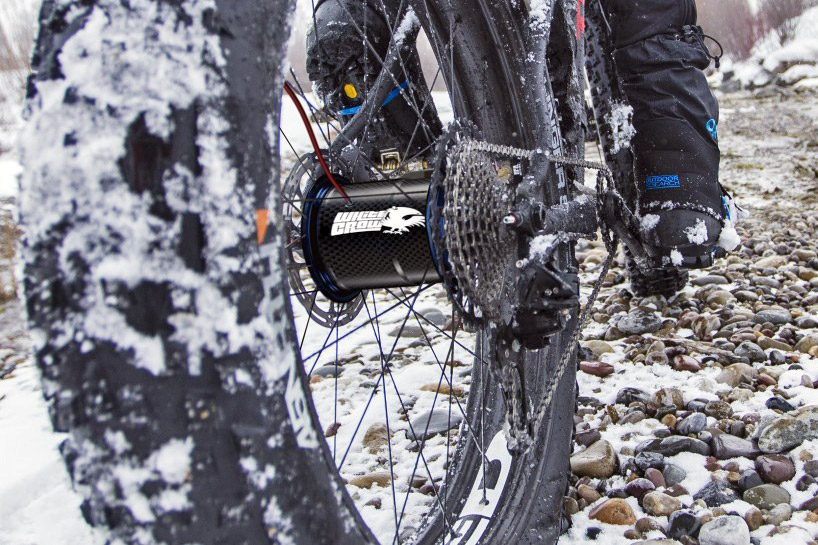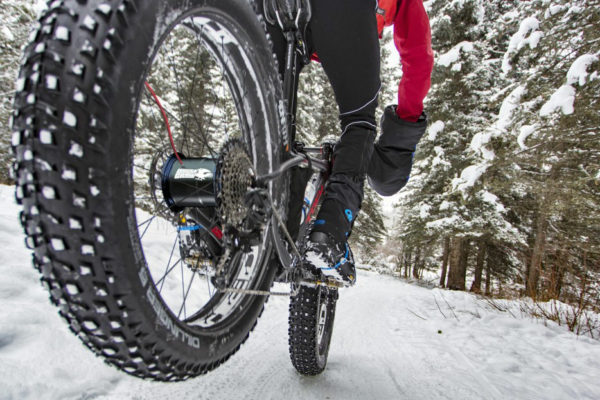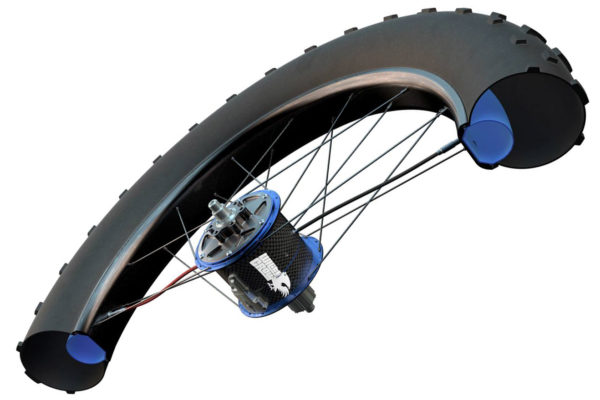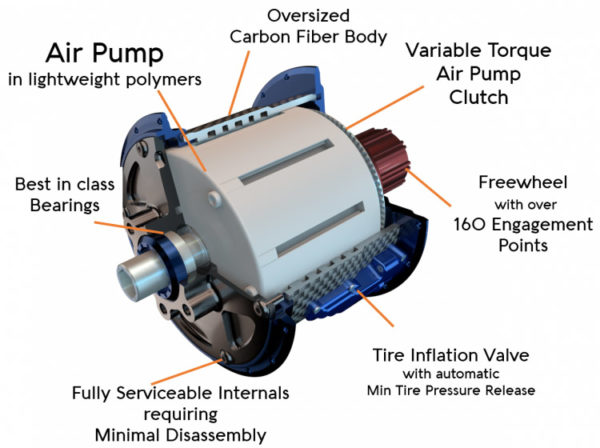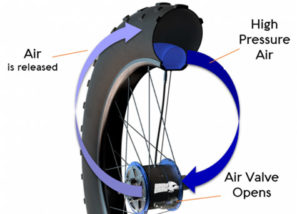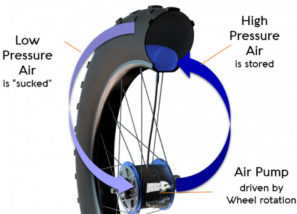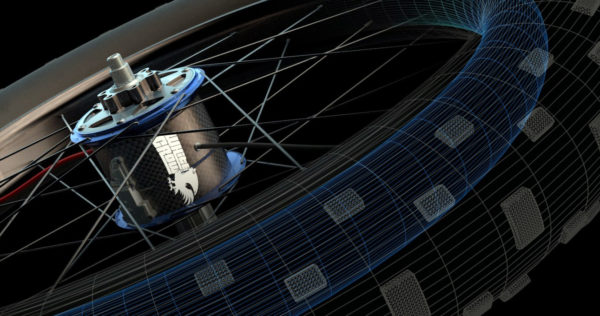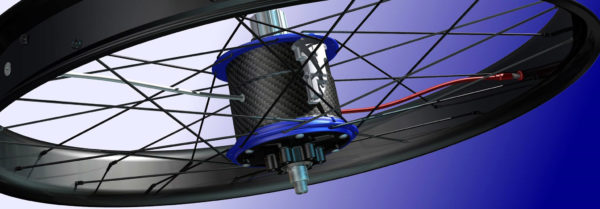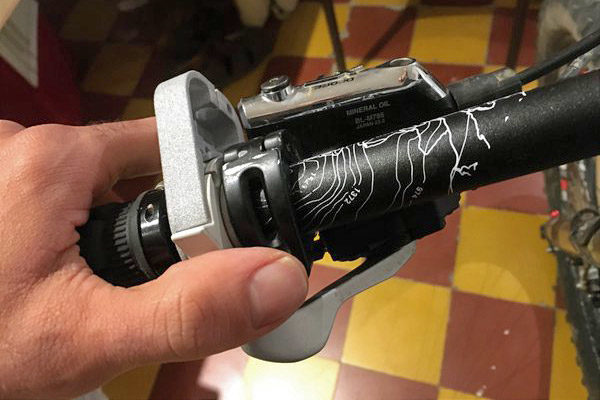Let’s start with the idea that the White Crow hubs let you adjust your tire pressure as you are riding along. That, in itself is no simple feat, but you might also think that it couldn’t possibly be worth all of the extra complexity (and probably weight too) just to be able to let air out of the tires while riding along. But of course it is much more nuanced than that.
With the growth of fat bikes (and maybe even plus-sized tires) for a lot of trail riding and racing, the difference in a few PSI, or even a 1/2 PSI in a fat bike in a race, can make a huge impact on grip, especially over loose surfaces. Plus, White Crow not only lets you lower or reinflate your tires on the go, it also uses a dual chamber system, much like we’ve seen recently with ProCore that actually lets us run even lower pressures without the risk of pinch flatting or burping a sidewall. So, how does it do it…
The basics go like this….
White Crow links two air chambers in your tires with a pump and valves in the hub that regulates pressures.
At the tire the system adds a secondary air reservoir that is essentially a smaller inner tube that sits against the rim, just like Schwalbe’s ProCore. It sits within the typical volume of the larger tubeless tire, and at the same time locks the tire’s bead in place so it can’t escape.
At the hub there is a lot more engineering. A mix of alloy and carbon of the oversized hub shell houses a large diameter polymer (plastic) air pump that can be alternately fixed to the axle or allowed to spin with the shell. That lets it pump air when needed, but doesn’t create internal drag when not in use. Then on the outside of the hub there are a couple of valves that link the two air chambers in the tire by hoses to move pressure from one to the other.
The whole things is operated by a clutch in the hub that you control with a lever on the bar. The remote gives you three positions: Inflation, where a valve opens letting air move from the high pressure secondary chamber to the tire; Rest, where the hub spins friction free; and Deflation, where the hub-based pump is engaged and the toque of the wheel spinning pumps air back into the high pressure chamber.
What that mean is that the air doesn’t change from inside the complete system, so no chance for outside contamination. But it also means that you can go up or down in pressure as many times as you want (up to equalizing the high pressure chamber and the tire itself.)
If you are curious (like we were) as to why you use the pump to lower pressure, instead of the other way around, the creators have a few good reasons. First, they figure that more often than not you’ll want to drop pressure for descending, so it will be easier to add some resistance on the flat or downhills with just a little more pedaling. And when you are climbing some smooth section you can increase pressure for less drag on the trail without any extra resistance against the pedals. Also, if you need to quickly add air back in or if there is some emergency or dramatic trail obstacle, you can reinflate from a stop quickly or even when you are bombing down a trail without having to worry about pedal input.
Besides just getting lower pressures and the associated improvement in comfort and traction, the White Crow system has other side benefits. The inner air reservoir goes a long way to preventing tubeless burping, and also protects the rim from obstacle impacts and pinch flats. That also means you can ride much thinner (read: lighter) rims on more technical trails. The setup also makes it easier to mount non-tubeless tires and rims tubeless because of the added security.
As for the nitty gritty details, the White Crow rear hub is compatible with 170 & 190mm QRs, 177 & 197mm 12m thru-axles, and Boost 148. Both Shimano 10 speed (11 mtn) & SRAM XD bodies are available. The front hub works with 15mm thru-axles only for a variety of spacings. Both hubs are 6-bolt standard, and each use a single White Crow Pressure Command lever (left & right) to adjust pressure. You set the base minimum pressure at the start of a ride, and then can add up to 15 psi more on the go, and move around in that range while you are riding. The act of deflating on the go consumes about 45W, but no resistance while inflating or staying at the same pressure. As for weight the system adds about 150g each wheel vs. typical fat hubs.
The White Crow air pressure regulation system was developed in Belgium, and is said to be able to stand up to muddy and wet conditions. That’s good, because foul weather is probably where this type of a system would really shine. So what is the state of the White Crow? It is currently in a working prototype stage. Founder and design engineer Xavier Serret is shopping the product to parts suppliers in the industry and hopes to get to market soon.
